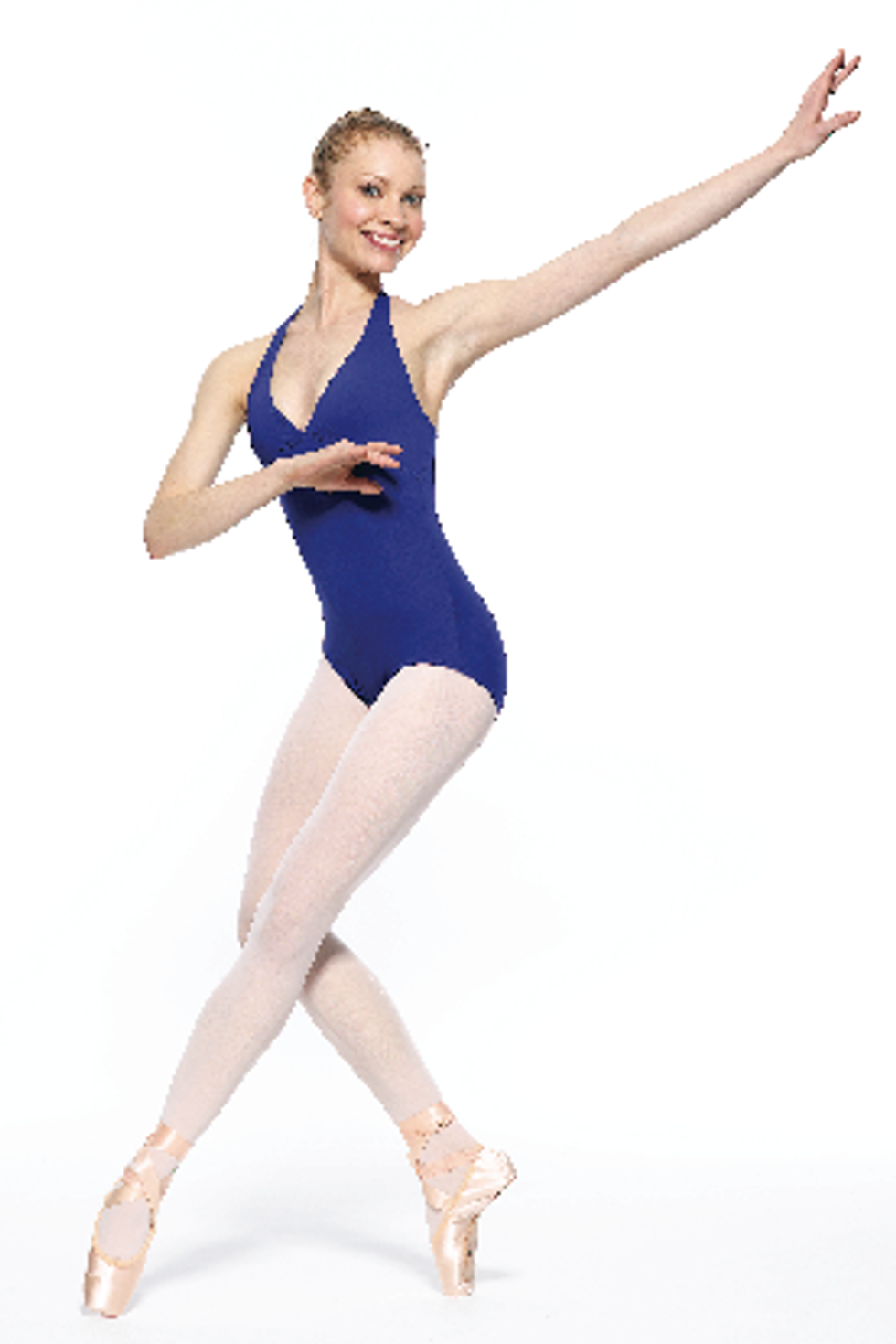Hop to It!

Photo of New York City Ballet’s Lauren King demonstrating hopping on pointe. Photo by Nathan Sayers.
You’re at a performance of Giselle, watching the ballerina hop on pointe during her Act I variation like it’s the most natural thing in the world. But when you get into class the next day and try it yourself, reality hits: You feel heavy and awkward, your ankles buckle and your toes hurt.
Mastering hops on pointe is no easy task. Nearly all students feel insecure when they start working on this scary-looking part of classical technique. And odds are, if you haven’t tried them yet, you’ll have to soon, because they show up just about everywhere—Kitri’s Act III solo in Don Quixote, the pas de trois in Swan Lake, the fairy variations in Sleeping Beauty. But don’t worry: With some practice and a few basic tricks, you’ll soon be on your way to happy hopping.
Getting the Basics
When you hop on pointe, your feet and ankles should make a “hook.” To find the right shape, Barbara Sandonato, director of the Sandonato School of Ballet and former dancer with Pennsylvania Ballet, suggests facing the barre in sous-sus on pointe. Then plié without pushing over your arches. “Your feet look funny,” she says, “but that’s the correct position.”
Once you know how to hook your feet, face the barre again in sous-sus with your right foot in front and plié into the hooked position. Do three small hops and straighten up while holding on to the barre. Repeat the sequence with the left foot in front. When you’re ready, try it with changements.
After you feel secure hopping from two feet to two feet, try one leg at a time. Sandonato recommends beginning with hops in a low arabesque (but check with your teacher, who may prefer a different position). Step away from the barre and extend your right leg to the front, then piqué onto pointe, from a pointed foot directly onto a hooked foot. Holding on to the barre, plié deep into the right leg to feel the total transfer of weight. Try a few hops in this position and then switch sides.
To supplement these technique-based exercises, do strengthening exercises that work your metatarsals, ankles and core (see above). Once you feel strong hopping at the barre, move to the center—but start slowly. Again, master hopping on two feet before graduating to one-footed hops.
Troubleshooting
Most dancers have one leg that’s stronger than the other. “My right leg is a little bit weaker because my left is always my main supporting leg,” says Vanessa Zahorian, a principal with San Francisco Ballet. When hopping on her right leg, Zahorian concentrates on holding her core and seat muscles and aligning her shoulders over her knees and toes, which keeps her stable.
Victoria Jaiani of the Joffrey Ballet has also found that thinking about the whole body, rather than just the supporting foot, makes hopping easier. “Everything must be activated and held,” she says. “The second you bear down on your foot, that’s when tension really shows.” Absorb some of the weight in your thighs by lifting through your back and pulling up out of your shoes. A soft, pliant plié will also keep you from looking brittle or weak.
If your hops are supposed to travel, be careful not to go too far too quickly. Zahorian says it’s easiest to lose control and fall over when you’re trying to cover too much space, because your upper body gets ahead of your feet. Take it slow.
Adding Finesse
After you’ve mastered the basics of hopping on pointe, think about creating elegance in your upper body. If you’re wearing a long skirt, play with it; if you’re dancing Kitri’s variation, work your fan. Kathleen Breene Combes, a principal at Boston Ballet, is a strong believer in distraction. “If your upper body looks beautiful, you get away with more,” she says. “Polish your port de bras, and make sure your face doesn’t show any stress.” Think of the hops as a part of the dance instead of an isolated scary step. If you look like you’re having fun, the audience will have fun too.
Strengthening Exercises
Try these exercises to improve your hops on pointe.
• Use a latex exercise band to work your metatarsals and ankles. Sit with one leg extended in front of you, stretch the band around the ball of your foot and your toes and use your hands to pull the ends of the band back toward you. Slowly point and flex your foot, using the resistance of the band to work through your metatarsals. Then wing and sickle your foot against the band to develop stronger, more stable ankles.
• Try “doming” to strengthen your arches. Put your bare foot flat on the floor, and then pull up under your metatarsals, keeping your toes in contact with the floor. Be sure that your toes remain straight, rather than crunching.
• Strengthen your core by doing sit-ups or Pilates. Having a strong center will help take the pressure off your toes.
Quick tip:
If you’re going to be doing a lot of hopping on pointe, try hardening the tips of your shoes—either by darning them (sewing a circle of thick thread around the tip of each shoe) or by applying Jet Glue to the inside of the box. Even if you usually like dancing in soft shoes, you’ll be grateful for the extra support.
Julie Diana is a principal dancer with Pennsylvania Ballet. She holds a BA in English from the University of Pennsylvania and writes for various dance publications.




